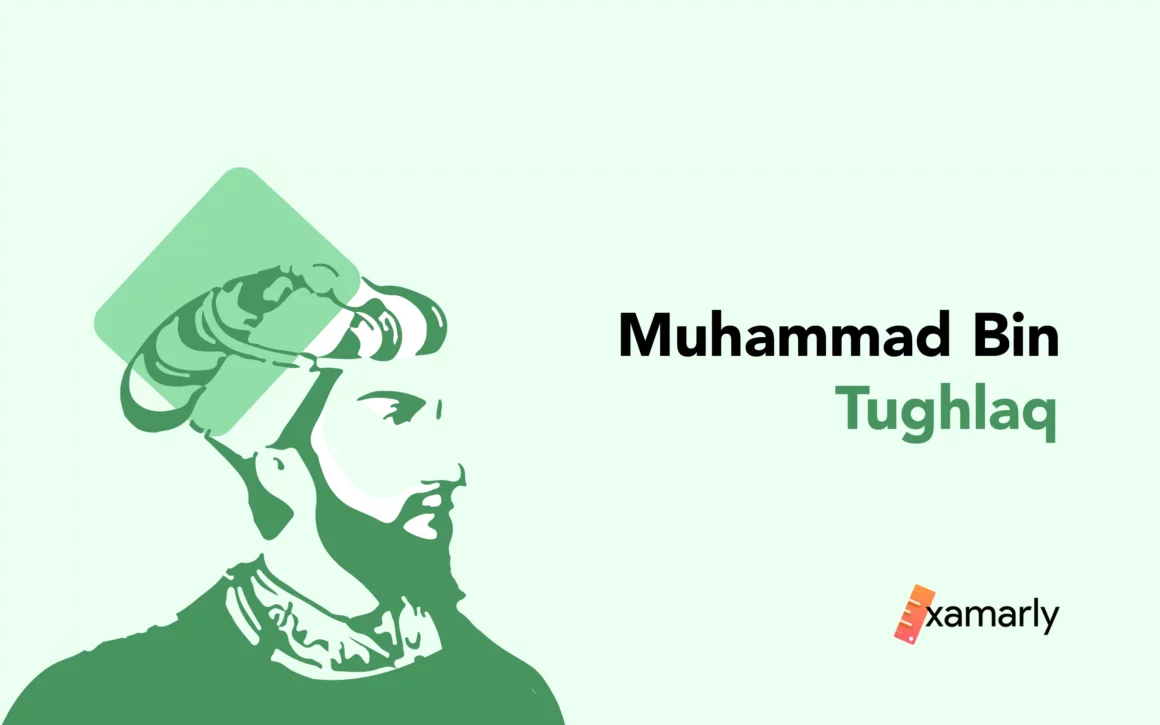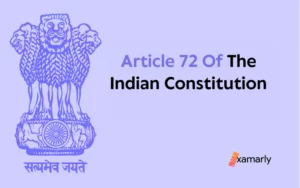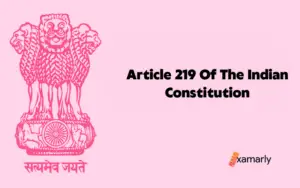In the 14th century, from 1325 to 1351, Muhammad bin Tughluq, also known as Fakhr Malik Jauna Khan, Ulugh Khan, was Ruled as the Sultan of Delhi. He was Ghiyas-Ud-Din-Tughluq’s(founder of the Tughlaq Dynasty) eldest son. Ghiyas-ud-din(Ghazi Malik) in 1321 and 1323, sent his eldest son Muhammad to battle King Prataparudra in the Deccan. Muhammad bin Tughluq advocated for the political and administrative India to be unified.
He introduced some remarkable administrative measures which, although failed, were very distinct and exemplary in nature.
Muhammad bin Tughlaq is supposed to have given the order to massacre all the citizens of the Hindu city of Kannauj while he was in power. He is renowned for his erratic policy changes as well. Muhammad became king of Delhi in 1325, following the demise of his father.
Courtesans lauded Tughluq as a “man of knowledge” who was interested in Persian, Urdu/Hindustani, philosophy, medicine, mathematics, and religion, according to British historian Stanley Lane-Poole, who lived in the 19th century CE.
Let’s dig deeper into the tales of his life and learn about him in brief through this article. This article will be beneficial for the aspirants preparing for the UPSC Exam.
Muhammad-bin-Tughluq: Historical context
- In 1325, Fakhr Malik Jauna Khan took the throne as Muhammad bin Tughlaq, succeeding his father Ghiyath al-Din Tughluq.
- He was considered one of the most educated scholars of his era. He was fluent in Arabic and Persian and had a solid foundation in mathematics, astronomy, physical science, and logic.
- The Sultan, who enjoyed friendly relations with foreigners, received an embassy from the Chinese emperor.
- To reconstruct Buddhist monasteries that had been devastated during the vital expedition in the Himalayan region, Toghan Timur came to ask for permission.
- Ibn Batuta was sent to the Chinese emperor’s court in 1347 after the sultan permitted him.
- Ibn Battuta was a Famous traveler from Morocco who came to his court.
- After coming to India in 1333, Muhammad-bin-Tughlaq selected him to serve as Delhi’s chief Qazi.
- He left behind a priceless history of Muhammad-bin-Tughlaq’s rule.
- The Mongol leaders who invaded North India were seized and confined by him.
Domestic Policies
- In the Doab area, he raised taxes to refill the treasury.
- To restrain from paying hefty taxes, many people moved into the forests, neglecting agriculture and resulting in major food scarcity.
- His capital used to be Delhi, but he moved it to Devagiri to safeguard it, and he also ordered the general public and government officials to do the same. However, after much struggle, he commanded them to return to Delhi.
- He devised the copper token currency and declared it as legal tender.
- He was compelled to remove the copper token exchange since the worth of coins dropped.
- To take control of Transoxiana, Iraq, and Khurasan, he gathered an army of 3,70,000 men.
- The Mongol leader Tamashirin’s strategy of extravagant gifts offered to restrain the Mongol invasion placed a tremendous weight on Mohammed bin-Tughluq’s National treasury.
- Mohammed-bin-Tughluq devised good domestic policies, but their execution was poor, which contributed to their failure.
- He made hasty choices and enacted policies poorly, which drove Delhi Sultanate to reach its end.
Revenue Administration
- Sultan Muhammad Tughlaq took a number of actions to enhance revenue management. Among these steps was the establishment of a register where all earnings and spending of the princes were recorded.
- The Sultan’s primary objective was to ensure that every town was taxed equally throughout his kingdom.
- The system’s advantages are unknown, though. At the beginning of his rule, the Sultan increased taxes in the Doab.
- Barani asserts that taxes have climbed 10 to twenty times. During a famine brought on by an absence of rain in the Doab, taxes were raised.
- The peasants consequently gave up their lands and started committing highway robberies rather than paying taxes.
- Numerous uprisings occurred due to tax collectors’ continuing use of tyranny to collect taxes.
- The Sultan’s strategy turned out to be a massive failure. It was impossible to collect even the regular Doab revenue.
- The Sultan also lost the respect of his subjects.
Agriculture Department
- Amir-i-kohi was chosen as the minister to head up the distinct agriculture department which Muhammad Bin Tughluq had created.
- This department’s main objective was to expand the area under cultivation.
- In three years, the government spent close to 70 lakh rupees, but the experiment failed, and the program was discontinued.
- The dishonesty of the officer, the low quality of the farmland chosen, and the disregard of cultivators who were given land under the supervision of the government were all factors in the failure of the plan.
Capital Transfer
In the Deccan region of India, which is now Maharashtra, Muhammad bin Tughluq gave the order to move his capital from Delhi to Daulatabad, also known as Devagiri. Muhammad bin Tughlaq himself had spent a number of years as a prince on a campaign in the southern states under his father’s rule. Daulatabad was also placed in a strategic way to enable the administration of both the north and the south. Every amenity was accessible to anyone who had to relocate to Daulatabad. The majority of Delhi inhabitants, it is believed, were against transferring the base to Daulatabad. To facilitate travel, the road was built wide.
He planted shady trees on both sides of the road, and he set up rest areas every two miles. At the stations, there was also food and water available. Tughluq erected a khanqah at each of the locations where at least one Sufi saint was stationed. Between Delhi and Daulatabad, regular mail service is currently available. His mother went to Daulatabad in 1329 with the aristocracy. Muhammad bin Tughluq invited everyone to the new capital at about the same time, including slaves, lords, servants, ulema, and Sufis.
Each class of person had their own rooms in the new capital’s mohalla, or wards, including warriors, judges, poets, and aristocrats. Additionally, Tughluq gave the immigrants grants. Despite moving, the residents still voiced their unhappiness. Travel-related weariness and hunger claimed the lives of many people. Daulatabad was also referred to as “the second capital” on coins made there in 1333.
In 1334, there was an uprising in Mabar. When he was on his way to put a stop to the insurrection, a bubonic plague outbreak occurred at Bidar, which caused Tughluq to fall ill and lose many of his men. Mabar and Dwarsamudra escaped Tughluq’s grasp when he withdrew to Daulatabad. After that, there was an insurrection in Bengal. Out of worry that the sultanate’s northern border was open to invasion, Muhammad bin Tughluq decided to relocate the capital back to Delhi in 1335, allowing the inhabitants to return to their home city.
Introduction Of Coins
- Muhammad Bin Tughluq launched several coins during his rule. The coinage system was remarkable for the commencement of token money and the production of brass and copper coins.
- The Sultan fixed the value of these token coins at par with silver and gold and declared them lawful currency.
- The copper coin was formerly referred to as Jital (Paisa).
- He issues the coins of copper and silver, and tanka (rupees).
- The Sultan produced copper and silver coins for the Tanka (rupee).
- He increased the weight of the current gold dinar from 172 grains to 202 grains and established a new coin composed of silver called the adlis.
- The Sultan’s strategy was a complete failure. The Sultan was widely regarded to be responsible for the collapse of the scheme.
- They claim the Sultan erred by failing to take sufficient measures to stop the forging of royal mint coins. As a result, craftsmen with average skill levels could replicate those coins.
- Citizens consequently started minting token coins in their houses. The failure of the plan was due to both the Emperor and his subjects.
Death Of The Ruler & The Downfall Of Empire
- While fighting the Turkic slave tribe Taghi in Sindh in 1351, Muhammad Bin Tughluq perished while heading to Thatta, Sindh.
- Due to dual resistance, the Delhi Sultanate was crushed during his rule. This two dual resistance were:
- Rajputs under Mewar’s Hammir Singh, and
- The rest came from the South Indian rulers Bukka and Harihara.
- After his triumph in 1336 in the Battle of Singoli, Rana Hammir Singh freed strategic Rajputana.
- The Madurai Sultanate, which ruled a significant portion of South India under the Delhi Sultanate, was initially vanquished and eventually ended by Harihara and Bukka, who then founded the Vijayanagara Empire.
- Musunuri Kaapaaneedu, one of several south Indian kings, was also instrumental in the fall of Delhi’s Islamic Sultanate.
- The troubles of Muhammad bin Tughluq were made worse by the uprising of his generals.
- The Bahmani empire was founded in the Deccan by one of his generals.
- Rajputs overcame the Sultan dynasties that emerged after Tughluq, notwithstanding their campaigns outside of Delhi.
Conclusion
The nobility of Muhammad bin Tughluq was split up into numerous separate groups. They couldn’t possibly feel united or devoted to the monarch. On the contrary hand, the empire’s vastness offered room for revolt and the quest for distinct spheres of power. This tendency was fueled by Muhammad Tughlaq’s hot-tempered and impulsive nature and his propensity for punishing individuals he perceived as being in opposition or disloyal. As a consequence, while Muhammad bin Tughlaq’s rule was the crowning glory of the Delhi Sultanate, it correspondingly signaled the start of its decline.
UPSC Previous Year Question
Assertion (A): Muhammad bin Tughlaq left Delhi and for two years lived in a camp called Swargadwari.
Reason (R): At that time, Delhi was ravaged by a form of plague and many people died. (UPSC 2002)
| A) Both A and R are individually true and R is the correct explanation of A |
| B) Both A and R are individually true but R is not a correct explanation of A |
| C) A is true but R is false |
| D) A is false but R is true |
Ans A) Muhammad bin Tughlaq spent his two years away from Delhi living in a camp known as Swarga-dwari. This was due to the fact that Delhi was heavily impacted at the time by the bubonic plague, which caused numerous deaths. Nearly half of the Sultan’s army was destroyed. In 1334, the plague struck the city.
FAQs On Muhammad Bin Tughluq
Why Muhammad Bin Tughluq Decided To Move Capital From Delhi To Daulatabad?
Muhammad Tughlaq’s plan to move the capital from Delhi to Daultabad is due to the following reasons listed below:
1. Daultabad was tactically more positioned and more centrally located than Delhi, and the Sultan’s kingdom had expanded throughout the entirety of India.
2. In contrast to the north, south India needed more focus on governance and consolidation due to the desire to maintain the capital safe from Mongol invasions or, conversely, the lack of threat from such invasions.
3. The allure of wealth in the south and, most probably, his wish to promote Muslim culture there.






